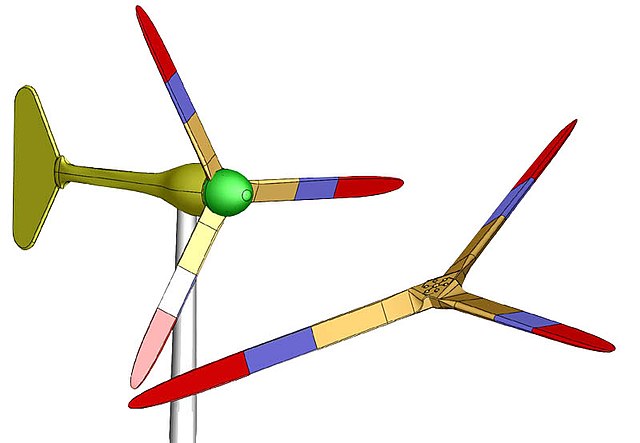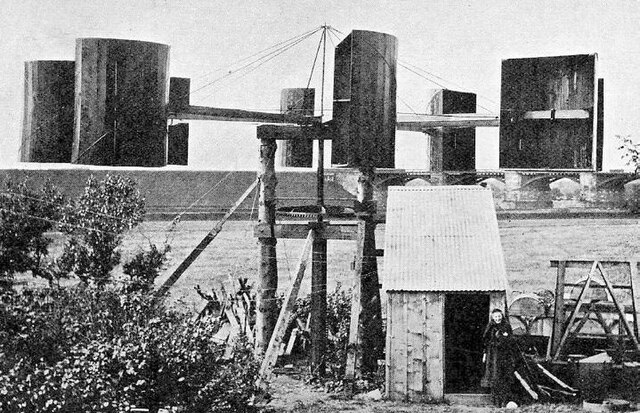Small wind turbines, also known as micro wind turbines or urban wind turbines, are wind turbines that generate electricity for small-scale use. These turbines are typically smaller than those found in wind farms. Small wind turbines often have passive yaw systems as opposed to active ones. They use a direct drive generator and use a tail fin to point into the wind, whereas larger turbines have geared powertrains that are actively pointed into the wind.
Diagram of a small wind turbine and repeller.
A 1 kW micro windmill installed in the suburbs of Lahore, Pakistan.
Ground mounted small wind turbines are typically supported by four guy-wire, and a gin pole used to raise and lower the tower. Full mounting sets called "tower kits" are available.
Wind turbines small enough to be held by a single steel pipe are often secured with scaffold base plate mounted to a concrete foundation. A hinged design allows easy lowering for maintenance.
A wind turbine is a device that converts the kinetic energy of wind into electrical energy. As of 2020, hundreds of thousands of large turbines, in installations known as wind farms, were generating over 650 gigawatts of power, with 60 GW added each year. Wind turbines are an increasingly important source of intermittent renewable energy, and are used in many countries to lower energy costs and reduce reliance on fossil fuels. One study claimed that, as of 2009, wind had the "lowest relative greenhouse gas emissions, the least water consumption demands and the most favorable social impacts" compared to photovoltaic, hydro, geothermal, coal and gas energy sources.
Thorntonbank Wind Farm, using 5 MW turbines REpower 5M in the North Sea off the coast of Belgium
Nashtifan wind turbines in Sistan, Iran
Illustration of the wind turbine for power generation erected by Josef Friedlaender at the International Electrical Exhibition in Vienna in 1883
James Blyth's electricity-generating wind turbine, photographed in 1891








